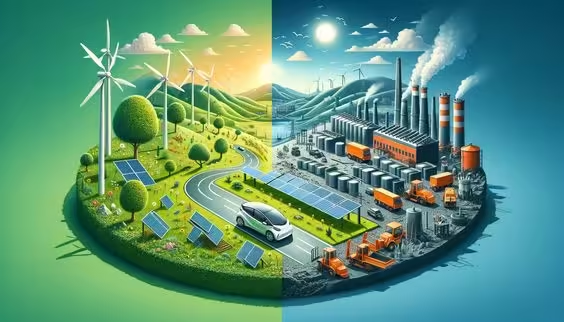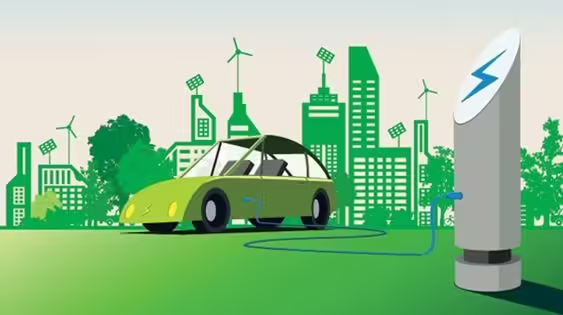
Electric vehicles (EVs) have become a prominent part of the transition toward sustainable transportation. While they are often associated with city living, where shorter commutes and accessible infrastructure are common, EVs are also making inroads into rural areas. However, the practicality and benefits of owning an electric car can differ significantly based on whether you live in an urban or rural setting.
This blog post explores the key differences, advantages, and challenges of owning an EV in urban versus rural environments, helping potential buyers decide if an electric car suits their lifestyle and location.

1. Charging Infrastructure: City Convenience vs. Rural Challenges
One of the biggest factors influencing EV ownership is access to charging infrastructure.
Urban Areas: Abundant Charging Options
Cities often have a well-developed network of public charging stations, including Level 2 chargers and DC fast chargers. EV owners living in urban areas are more likely to have access to:
- Home chargers (for those with private parking).
- Charging stations at shopping malls, workplaces, and parking garages.
- Public fast chargers for quick top-ups during busy schedules.
Urban dwellers benefit from the proximity of services, making it easier to plan and charge their vehicles without much disruption to their routine.
Rural Areas: Limited but Growing Infrastructure
Rural areas have fewer charging stations, posing a challenge for EV owners. Public fast chargers may be sparsely distributed along highways and in small towns, requiring careful route planning for long trips. However, rural residents with home charging setups enjoy the convenience of charging overnight at lower electricity rates, reducing their dependence on public chargers.
Future Outlook: Governments and private companies are investing in expanding charging infrastructure to rural areas, with some programs focused on installing chargers in small towns and along key highways.

2. Driving Range Requirements: City Commutes vs. Long Rural Drives
The driving range of an EV is a critical factor for potential buyers, especially in rural areas where distances between destinations are greater.
Urban Living: Shorter Commutes, Lower Range Anxiety
City drivers typically travel shorter distances, often commuting less than 30 miles a day. For them, even compact EVs with ranges of 150-200 miles are more than sufficient. Range anxiety is minimal, as charging stations are readily available for top-ups, and many urban dwellers can recharge at home overnight.
Rural Living: The Need for Longer Ranges
In rural areas, people often travel long distances between towns or for errands, sometimes on remote roads with limited services. For rural residents, an EV with a range of 300 miles or more offers peace of mind. The good news is that many newer EV models, such as the Tesla Model Y or Hyundai Ioniq 5, provide extended ranges suitable for rural travel.
3. Cost and Savings: Evaluating EV Economics in Different Settings
Owning an electric vehicle offers potential savings, but the impact varies based on urban or rural living conditions.
Urban Areas: Lower Operating Costs and Incentives
City residents can benefit from lower running costs due to the higher price of gasoline in urban areas. Additionally, many cities offer incentives for EV ownership, including:
- Reduced parking fees or priority parking for EVs.
- Access to carpool lanes and toll exemptions.
- Government subsidies and rebates for purchasing EVs.
Urban drivers also save money on maintenance since EVs have fewer moving parts than internal combustion engine (ICE) vehicles.
Rural Areas: Energy Cost Savings and Long-Term Benefits
Although rural residents may not benefit from perks like reduced parking fees, they stand to save on energy costs by charging their EVs at home. Rural electricity rates are often lower, and if homeowners install solar panels, they can further reduce their energy expenses. While the upfront cost of EVs may be a concern, long-term savings from fuel and maintenance make them a smart investment over time.
4. Terrain and Road Conditions: Performance of EVs in Urban vs. Rural Settings
The type of terrain and driving conditions in a given area also influence the practicality of owning an electric car.
Urban Driving: Ideal Terrain for EVs
Cities feature flat roads, traffic congestion, and frequent stop-and-go driving—conditions where EVs perform exceptionally well. Their regenerative braking systems capture energy during braking, improving efficiency in heavy traffic. Compact EVs are also ideal for narrow streets and parking in tight spaces.
Rural Driving: Off-Road Capabilities and EV Challenges
Rural areas may involve driving on unpaved roads, hills, or highways, which can drain an EV’s battery faster than urban driving. However, several electric vehicles are designed to handle rugged terrains, such as the Ford F-150 Lightning or Rivian R1T, which offer all-wheel drive and impressive torque for off-road performance. Battery performance in extreme weather (cold winters or hot summers) may be a concern, but manufacturers are improving thermal management systems to address these challenges.
5. Environmental Impact: Urban Air Quality vs. Rural Sustainability
Both urban and rural communities can benefit from the environmental advantages of EVs, though in slightly different ways.
Cities: Reducing Air Pollution and Noise Levels
In urban areas, the widespread adoption of EVs helps reduce air pollution and noise pollution, contributing to cleaner air and improved public health. EVs are also part of smart city initiatives, with governments encouraging the use of electric buses, rideshares, and taxis to promote sustainable urban mobility.
Rural Areas: Promoting Sustainability with Clean Energy
While rural areas do not experience the same air pollution levels as cities, adopting EVs can still play a role in promoting sustainability. Many rural homeowners generate clean energy through solar or wind installations, making their EVs a part of a zero-emission lifestyle. Additionally, reduced reliance on fossil fuels aligns with global climate goals, ensuring rural communities contribute to environmental conservation.
6. Maintenance and Repair Considerations
The simplicity of EV maintenance is a benefit for both urban and rural owners, but access to repair services can vary.
Urban Areas: Easier Access to EV Service Centers
Cities typically have multiple authorized service centers and mechanics trained to handle EV repairs. This makes it easier for urban owners to access professional maintenance services and software updates when needed.
Rural Areas: Self-Sufficiency and Remote Support
In rural areas, access to EV service centers may be limited. However, EVs require less frequent maintenance than ICE vehicles, with no oil changes or complex engine repairs needed. Remote diagnostics and over-the-air updates provided by manufacturers like Tesla can help address software-related issues without the need to visit a service center.
7. Conclusion: Which Setting Is Best for EV Ownership?
Both urban and rural settings offer unique advantages and challenges for EV ownership.
- Urban Living: Ideal for those with short commutes, easy access to public charging, and a desire to benefit from incentives like reduced parking fees and toll exemptions. EVs thrive in cities, where frequent stops and traffic congestion make regenerative braking more efficient.
- Rural Living: Suitable for those with access to home charging, solar power installations, and a need for long-range vehicles. Although public charging infrastructure may be limited, rural EV owners can enjoy energy savings and long-term benefits with proper planning.
Ultimately, whether you live in a bustling city or a quiet rural town, EVs offer a cleaner, quieter, and more cost-effective driving experience. With advancements in charging infrastructure and vehicle range, electric cars are becoming practical for both urban and rural lifestyles, paving the way for a sustainable transportation future.

Leave a Reply